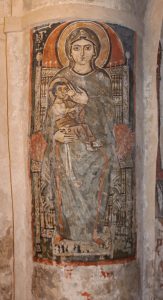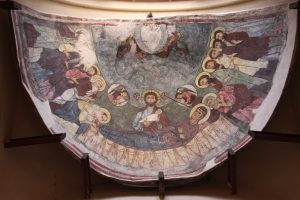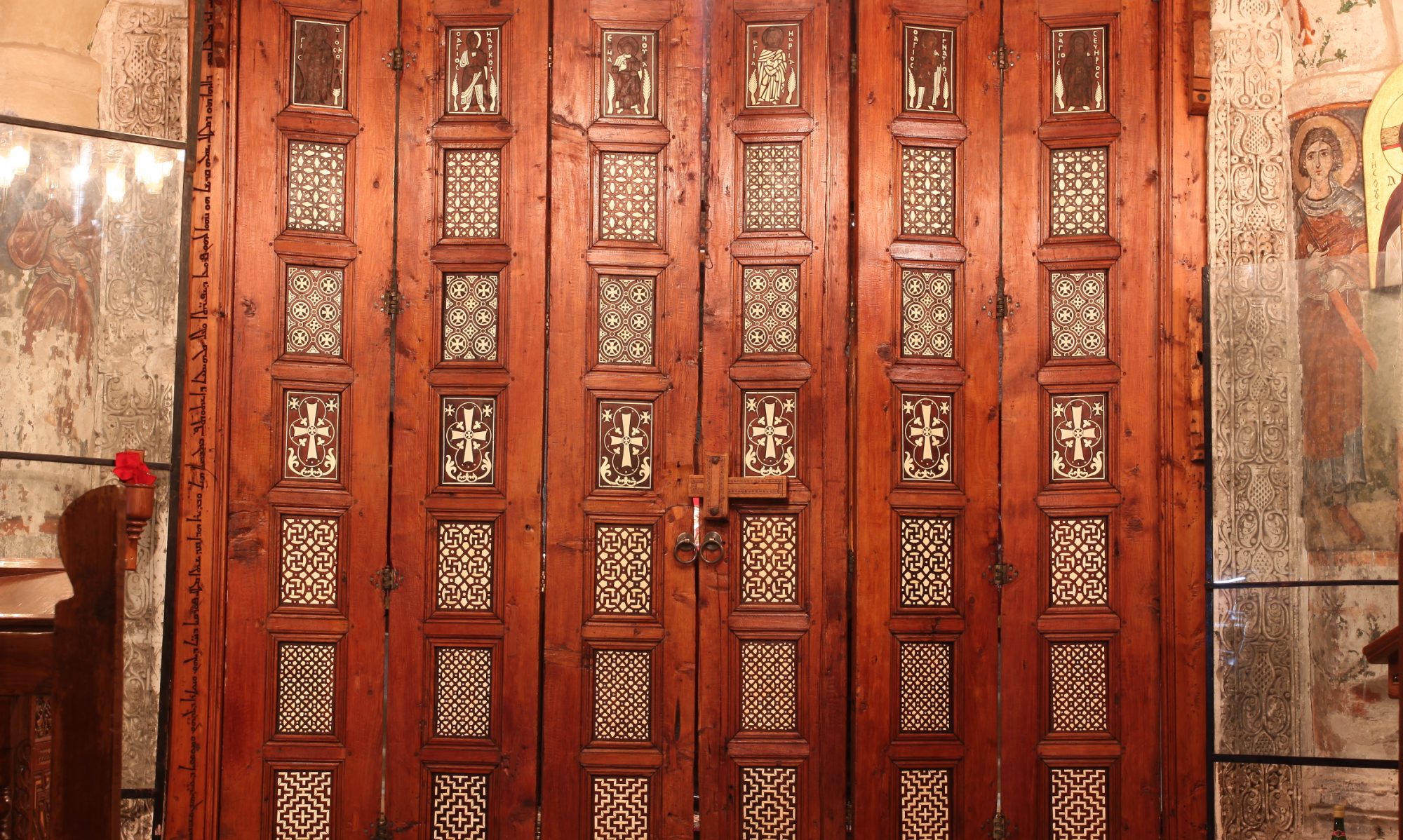
The long history of the building with its renovations has left the church with a complicated stratification of plaster and mural paintings. The goal of the project is not only to uncover and restore these paintings, but also to read this stratification in the way that archaeologists read a built-up of layers of soil in order to reconstruct a history. So far it has taught us much about how the church must have looked in the consecutive stages of its existence. In the second half of the 7th century, soon after the building was completed, a first and preliminary decoration was applied at its interior walls. It consisted of mostly decorative patterns and crosses in cheap pigments, red and yellow ochre. Soon, however, parts of these paintings were whitewashed and a more monumental series of paintings were executed. At first a dado-zone was painted throughout the church, a decorative zone of up to two meters high, an imitation of marble panelling.
On the higher parts of the walls and columns representations of saints were painted, probably over a span of years in the course of the 8th century. At a certain moment in the 8th century the four semi-domes of the church were decorated with a sequence of paintings that show main events in the life of Christ and in which the Virgin is also prominently present. It starts with the Annunciation in the western semi-dome, the adoration of shepherds and magi is in the northern end of the khurus, while in the now lost apse there was an Ascension. The last scene of the series, most probably Pentecost, is still hidden under a later painting in the southern end of the khurus.
In the 9th century a number of paintings were added to the interior. The most significant of these is a series that commemorates one of the Syriac abbots of the monastery, Maqari. His son and successor Yuhannon commissioned these paintings, which turned the eastern end of the southern side-aisle into a funerary chapel.

The 10th century saw the addition of monumental paintings in the khurus and the sanctuary, commissioned by Moses of Nisibis. The two domes in this area were decorated with an elaborate programme of themes from the Old and New Testaments, according to a schedule that must have been designed by the abbot himself. A remarakable aspect in these ‘Syriac’ paintings is that they contain various Coptic inscriptions and that they were done in harmony wth the erlier Coptic paintings, illustrating the fruitful coexistence of Coptic and Syriac monks in the community.

During the total renovation if the church in the 13th century all earlier paintings were covered and the interior was repainted totally. Apart from the paintings in the three surviving semi-domes, little is known about the total iconographical programme of this phase, since most of the 13th century plaster was removed again in the 18th century, when the church was renovated once more.

